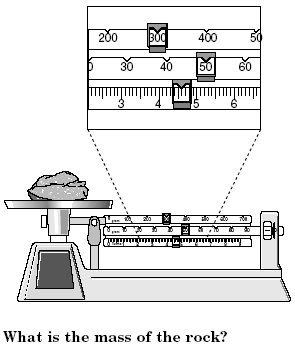Particle Theory Quiz #1
-
Everything is made of matter. Matter is made of...?
-
Little circles
-
Air
-
Particles
-
Solutes
-
Particle Theory Quiz #1 assesses understanding of matter's composition, behavior of particles under various conditions, and characteristics of pure substances. It's designed for learners to explore fundamental concepts in particle theory, enhancing their comprehension of physical science.

Quiz Preview
- 2.
When you increase the temperature, particles will
-
The speed of the particles stay the same
-
The speed of the particles increase
-
The speed of the particles decrease
Correct Answer
A. The speed of the particles increaseExplanation
When the temperature is increased, the kinetic energy of the particles also increases. This increase in kinetic energy leads to an increase in the speed of the particles. This is because the particles gain more energy and move faster, resulting in an overall increase in their speed.Rate this question:
-
- 3.
All the particles in a pure substance are...
-
Identical
-
Different
-
Mostly the same
Correct Answer
A. IdenticalExplanation
In a pure substance, all the particles are identical. This means that they have the same chemical composition and properties. Whether it is a solid, liquid, or gas, the particles in a pure substance are made up of the same type of atoms or molecules. This uniformity allows for consistent behavior and characteristics of the substance.Rate this question:
-
- 4.
Pure substances are substances that...
-
Are made of only one type of particle
-
Are made of 2 types of particle
-
Are naturally occuring
-
Are man-made
Correct Answer
A. Are made of only one type of particleExplanation
Pure substances are substances that are made up of only one type of particle. This means that all the particles in a pure substance have the same chemical composition and properties. Examples of pure substances include elements, such as oxygen and gold, and compounds, such as water and salt. These substances are not mixed with any other substances and do not have any impurities. Therefore, the correct answer is "Are made of only one type of particle."Rate this question:
-
- 5.
Particles are...
-
Moving only in liquids and gases
-
Moving only in gases
-
Moving in solids, and liquids
-
Moving in solids, gases and liquids
Correct Answer
A. Moving in solids, gases and liquidsExplanation
Particles in ALL states of matter are constantly movingRate this question:
-
- 6.
Rank in order from smallest to largest, the spaces between the particles in the states of matter
-
Gases, liquids, solids
-
Liquids, solids, gases
-
Solids, liquids, gases
-
Solids, gases, liquids
Correct Answer
A. Solids, liquids, gasesExplanation
The answer is solids, liquids, gases. In solids, the particles are tightly packed together, resulting in the smallest spaces between them. In liquids, the particles have more freedom of movement but are still close together, so the spaces between them are larger than in solids but smaller than in gases. In gases, the particles are far apart and have the most freedom of movement, leading to the largest spaces between them.Rate this question:
-
- 7.
There are spaces between...
-
Particles in gases
-
Particles in gases, liquids and solids
-
Particles in gases, and liquids
Correct Answer
A. Particles in gases, liquids and solidsExplanation
The correct answer is "particles in gases, liquids and solids". This answer is correct because particles exist in all three states of matter: gases, liquids, and solids. In gases, particles are spread out and move freely. In liquids, particles are closer together and have more interaction. In solids, particles are tightly packed and vibrate in place. Therefore, particles can be found in all three states of matter.Rate this question:
-
Quiz Review Timeline (Updated): Mar 20, 2023 +
Our quizzes are rigorously reviewed, monitored and continuously updated by our expert board to maintain accuracy, relevance, and timeliness.
-
Current Version
-
Mar 20, 2023Quiz Edited by
ProProfs Editorial Team -
Dec 18, 2014Quiz Created by
Gina
Particular Theory Of Matter
The Particle Theory of Matter This theory has five points:
1. all matter is made of extremely tiny particles (much, much smaller than cells!)
2. each pure substance is...
Questions:
25 |
Attempts:
3546 |
Last updated:
Aug 23, 2023
|
Particle Theory Of Matter Test
Explore the fundamentals of matter with the Particle Theory Of Matter Test. Assess your understanding of how particles behave in different states such as solids, liquids, and...
Questions:
10 |
Attempts:
4912 |
Last updated:
Dec 21, 2023
|
Grade 7 Chapter 7 Bump Up Quiz
The 'Grade 7 Chapter 7 bump up quiz' assesses understanding of particle theory, states of matter, and substance classification. It evaluates key concepts in physical science,...
Questions:
15 |
Attempts:
151 |
Last updated:
Dec 02, 2024
|
Physical Science- Particle Theory Quiz
Matter, as we have come to learn, is anything that has mass and occupies space. Particle theory is a theory of matter that states that a point is made up of small particles that...
Questions:
7 |
Attempts:
11599 |
Last updated:
Mar 22, 2023
|
SCIENCE BENCHMARK I: PART 1 (46)
PART 1:�The students will understand the Particle Theory of Matter and the periodical table.
They will identify scientists and their laws.
Questions:
46 |
Attempts:
673 |
Last updated:
Mar 22, 2023
|
Particular Theory Of Matter
The Particle Theory of Matter This theory has five points:
1. all matter is made of extremely tiny particles (much, much smaller than cells!)
2. each pure substance is...
Questions:
25 |
Attempts:
3546 |
Last updated:
Aug 23, 2023
|
 Back to top
Back to top







